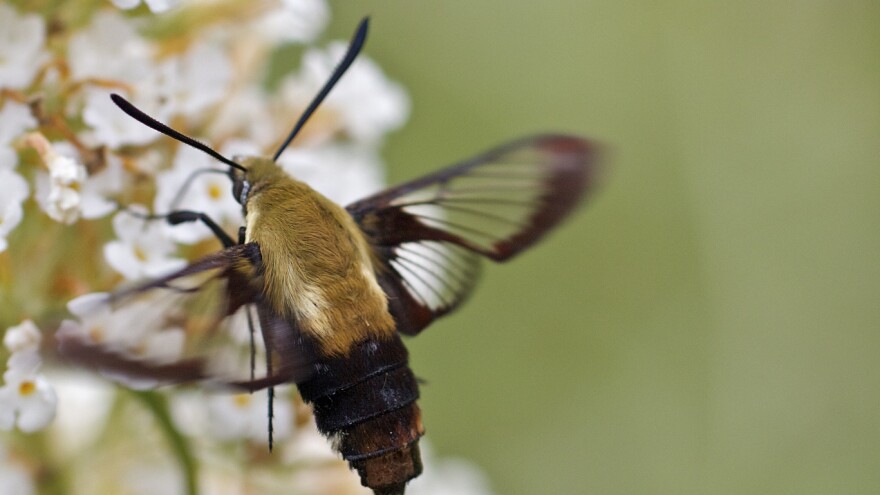For years I was convinced that there exists among us a strange, unidentified species of animal — something between bug and bird — jetting around gardens and flowers and trees.
Not too long ago one of these natural UFOs buzzed past me in broad daylight. Too big to be a bee, too itty-bitty to be a bird. Slow enough to glimpse, but too fast to identify.
Not exactly a hummingbird ...
Nor a bumblebee ...
What the heck was it?
The mystery was finally solved when a friend told me about ...
... the hummingbird moth.
It's a rare thing: An insect ... that acts like a bird. It's two, two, two creatures in one.
One of the rare researchers who has focused on the rare bird — um, moth — is Elena Tartaglia, who teaches biology at Bergen Community College.
Fresh off of , Elena explains that there are several types of moths that mimic hummingbirds. Her 2013 dissertation at Rutgers University was on the genus Hemaris, which appears during the day.
I ask Elena if she can speak to the mysterious nature of this birdlike thing.
"I don't think that they are mysterious," she says. "They are diurnal, so they are easily seen during the day foraging alongside bees if you know what to look for. I think the problem is that many people are unsure of what they are, or since they are mimics — and also very fast fliers — people may mistake them for hummingbirds or bumblebees."

Hummingbird moths are pollinators, Elena says, but "bees get most of the attention in pollination studies because they are far more abundant than Hemaris and because they are our major crop pollinators."
Elena says, "There is a long, well-established body of literature on bee foraging energetics and behaviors, and that just doesn't exist for hummingbird moths."
But once you know what a Hemaris looks like, she says, you will not mistake it for anything else.
That doesn't mean they are a cinch to study. "They were not the easiest insect to work with," Elena says. "They are difficult to catch in a net because they are fast and likely have good eyesight, and I found that keeping them captive to do any behavioral studies in the lab was near impossible. "
She has pondered the evolutionary reasons behind a moth that mimics a hummingbird. Unlike most moths — which are nocturnal — the Hemaris feeds in daylight hours like a hummingbird. Perhaps because there are more "floral resources" during the day, she says. In addition, "insectivorous birds are one of the main predators of moths. Insectivorous birds won't eat a hummingbird, hence looking like a bird protects Hemaris from predation."
Like a walking cane that is also a flask; a flip-flop that doubles as a beer bottle opener; an optical illusion; a labradoodle; a frenemy, the hummingbird moth falls into that cryptic category of transformers in life that are more than one thing — and more than what they seem to be.
------------------------------------------------------------------------------------------
The Protojournalist:Experimental storytelling for the LURVers — Listeners, Users, Readers, Viewers — of NPR.@NPRtpj
Copyright 2021 NPR. To see more, visit https://www.npr.org. 9(MDAxODg3MTg0MDEyMTg2NTY3OTI5YTI3ZA004))



